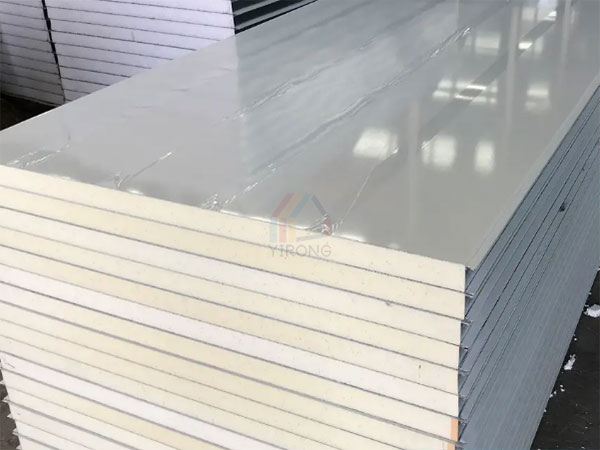Zhengzhou, Henan Province, China
Now Contact: Do you need PU/EPS/Rock Wool sandwich panels?
Zhengzhou, Henan Province, China
Now Contact: Do you need PU/EPS/Rock Wool sandwich panels?
PIR and PUR polyurethane foam sandwich panels are two completely different insulation materials, but they are sister products because they have the same or similar reactive groups, that is, the same or similar reaction raw materials used. The full name of PIR is polyurethane modified polyisocyanurate. It is a foam obtained by modifying a foam called polyisocyanurate with polyurethane. Its performance is quite different from that of polyurethane.
However, due to the fact that there are too few domestic manufacturers mastering PIR technology, and the two kinds of foams cannot be distinguished from the appearance, many people mistakenly believe that PIR is also a polyurethane foam. In fact, the two are quite different. PIR can be referred to as PIR foam, or polyurethane PIR foam, while ordinary polyurethane is called polyurethane foam or polyurethane PUR foam (or PU foam) to show the difference.

1. The difference in molecular structure
Polyurethane PUR foam molecular structure.
polyurethane modified polyisocyanurate foam (PIR foam) molecular structure.
2. The difference in fire performance
Polyurethane PUR foam: generally B3 grade, by adding flame retardant, it can reach B2 grade.
PIR foam: generally B2 grade, by adjusting the concentration of polyisocyanurate ring and other formulation techniques, it can reach B1 grade, and the oxygen index can reach more than 35%.
3. The difference in thermal insulation performance
Polyurethane PUR foam: thermal conductivity is generally 0.022 ~ 0.026 W/mK (25 ℃).
PIR foam: Thermal conductivity can be as low as 0.018 W/mK (25°C).
4. The difference in bulk density
Polyurethane PUR foam: generally achieve 35 ~ 45kg/m3, can meet the relatively satisfactory strength requirements.
PIR foam: generally 45 ~ 55kg/m3, can achieve satisfactory strength requirements.
5. The difference in temperature resistance range
Polyurethane PUR foam: generally below 110℃.
PIR foam: can reach about 205 ℃.
6. The difference in water absorption
Polyurethane PUR foam: generally 2.5 to 3%.
PIR foam: up to 0.9%.

Compared with other materials of the same type, polyurethane materials have outstanding properties, so they are widely used in many fields of production and life. Among them, the polyurethane sandwich panel is one of the utilization forms. Polyurethane sandwich panel, as the name suggests, is a panel composed of polyurethane material. Specifically, it is composed of polyurethane materials and other sheets. In layman's terms, a polyurethane material is sandwiched between two steel plates or other materials.